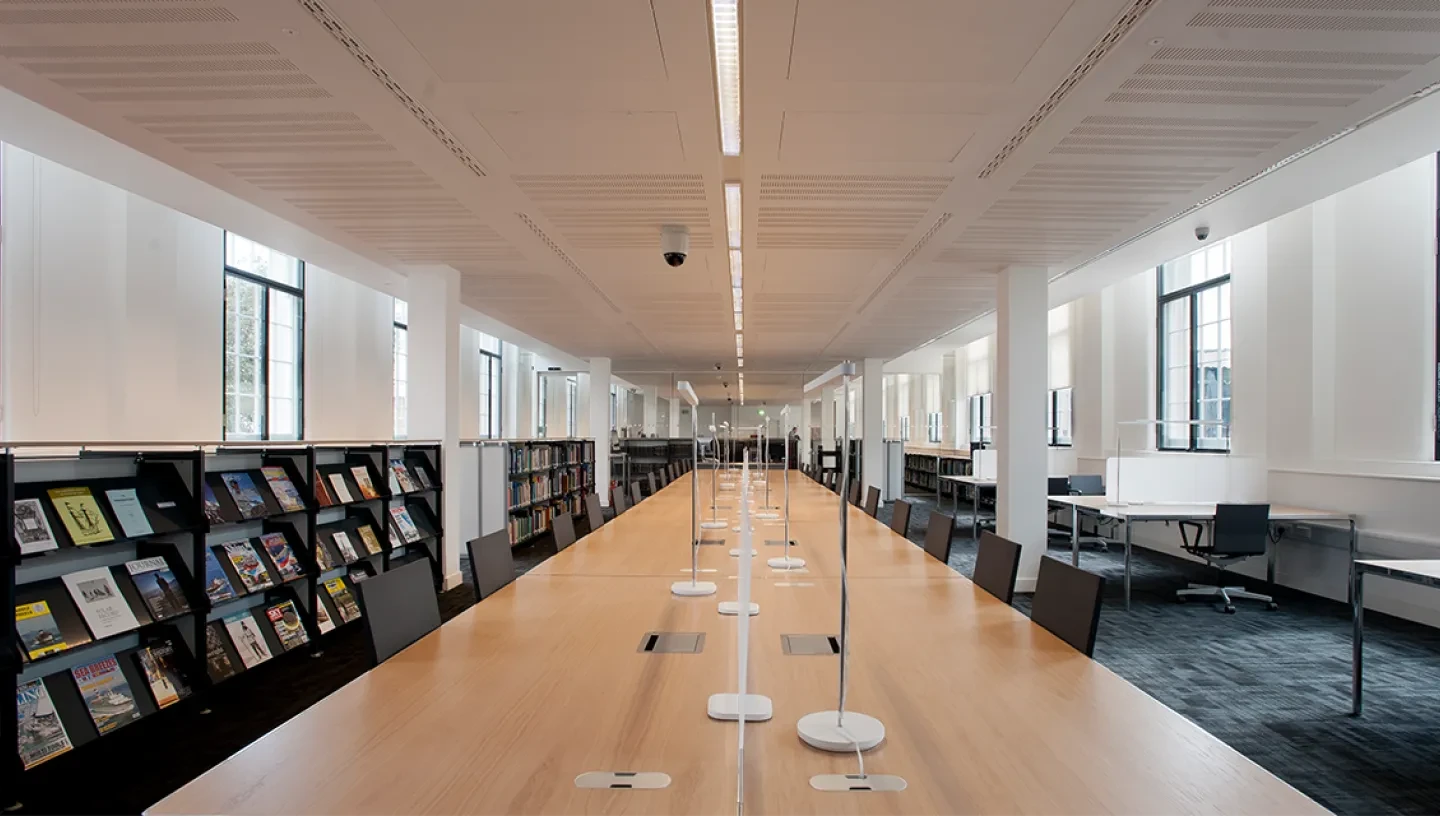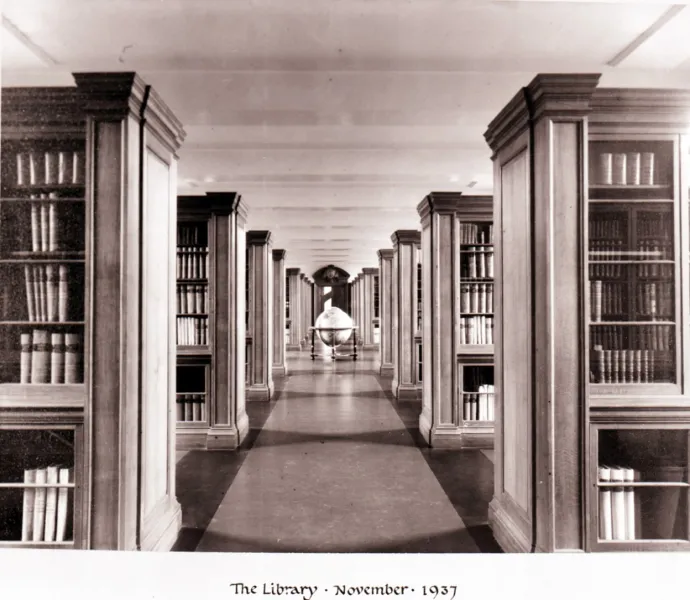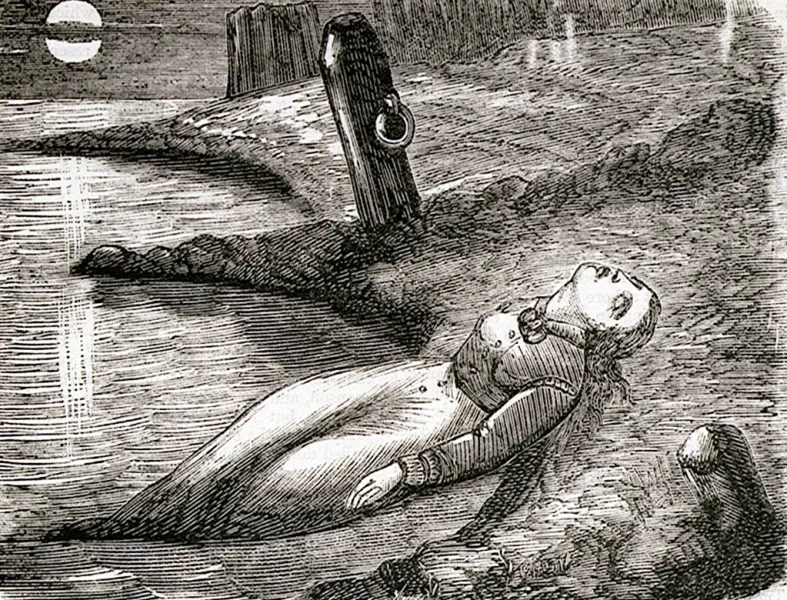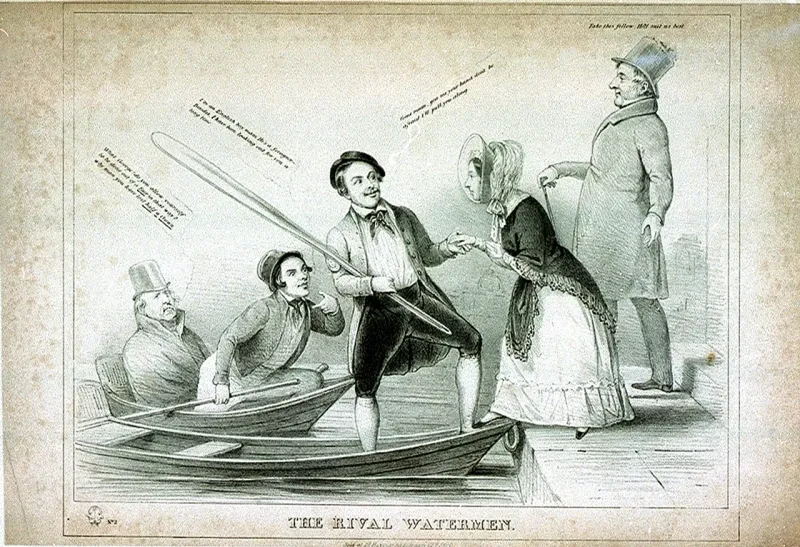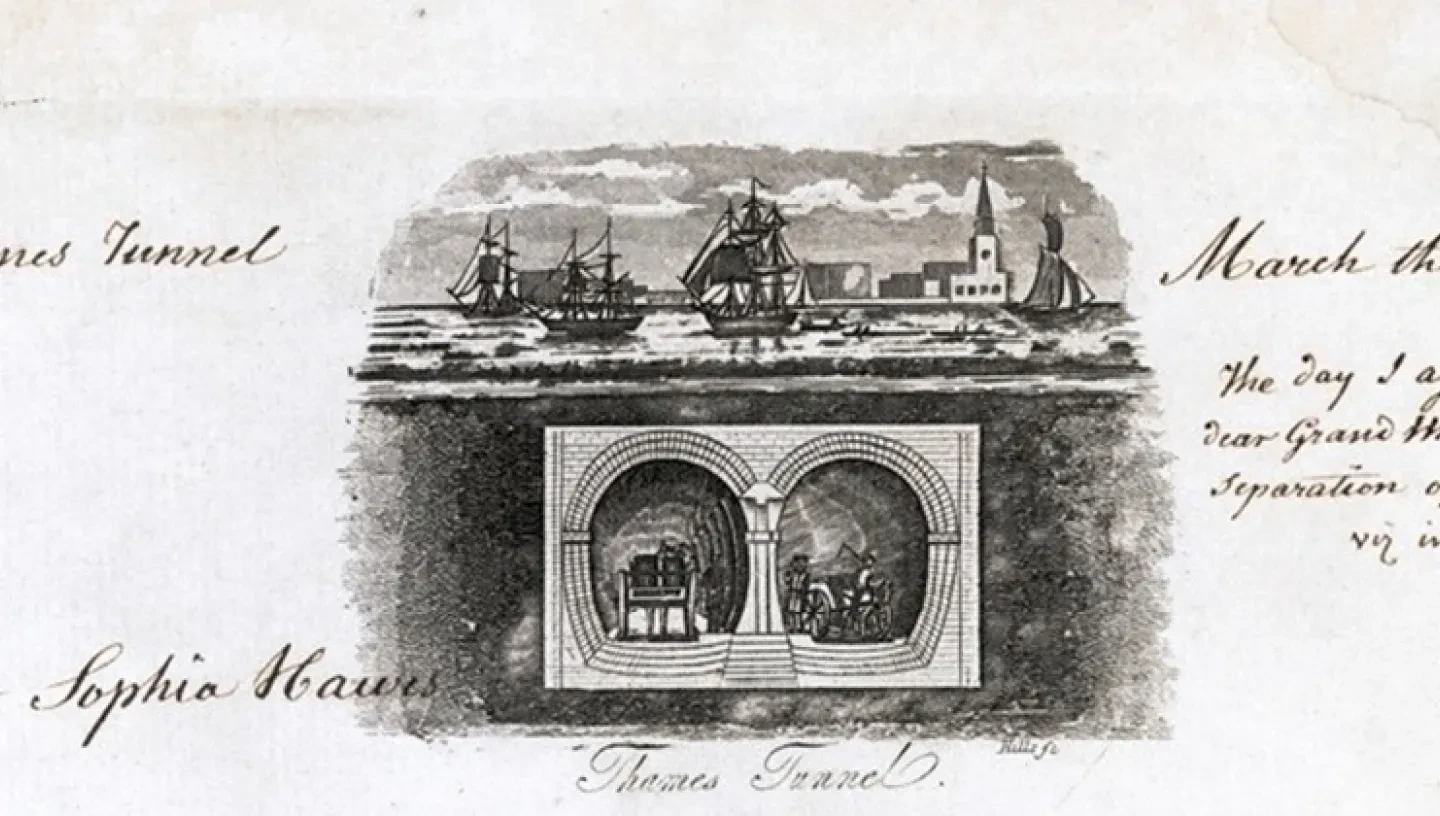
The year 2019 marked the 150th anniversary of the opening in 1869 of the East London railway line, completed in 1843 with the help of pioneering technology invented by Marc Isambard Brunel
In 2019, it was the 150th anniversary of the opening in 1869 of the East London railway line, which now forms part of the London Overground network. The initial stretch of track ran between Wapping and New Cross, and made use of the Thames Tunnel, which had been completed over a quarter of a century earlier, in 1843, with the help of pioneering technology invented by Marc Isambard Brunel.
The Caird Library and Archive holds a letter written by Brunel to his granddaughter Sophia (RMG ID: AGC/1/45). The letter is dated 10 March 1842, about a year before the tunnel was completed. At the top of the sheet is an image showing a cross-section of the tunnel, with the Thames flowing overhead.
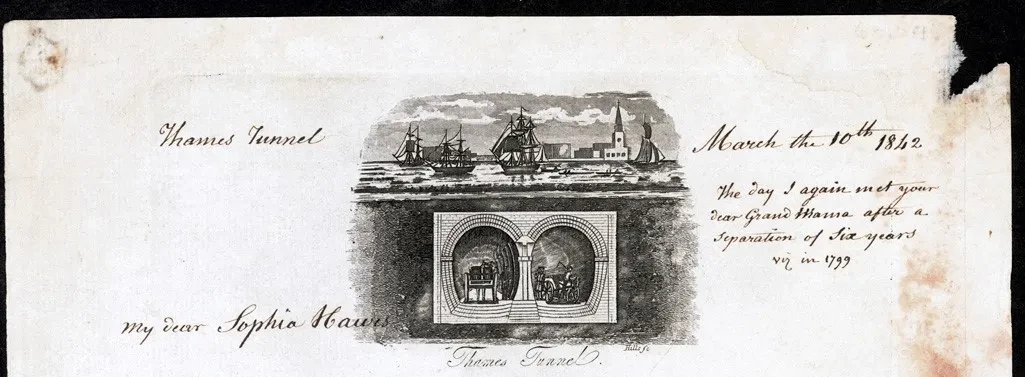
Letter written by Brunel to his granddaughter Sophia Hawes in 1842 (RMG ID: AGC/1/45)
Two previous attempts to build a tunnel under the Thames at around the turn of the century had proved unsuccessful and experts had concluded that such an undertaking was ‘impracticable’. However, in 1823, the Thames Tunnel Company was founded with the aim of building a tunnel between Rotherhithe and Wapping, using tunnelling shield technology that Brunel had patented in 1818.
Brunel’s son, Isambard Kingdom Brunel, also worked as an engineer on the project.
The major hurdle to overcome in attempting to build an under-river tunnel was how to reinforce its walls as it was being dug out, before the force of the river caused the walls to collapse and the tunnel to be flooded.
In Brunel’s letter to his granddaughter, he explains how he had drawn inspiration from the ability of the shipworm to burrow tunnels into pieces of wood. He wrote:
‘… about the year 1812, being then employed in the Dockyard at Chatham… I happened to see before me a piece of condemned timber, a portion of the keel of a ship, wherein the sea-worm… had made many erosions, even near the water edge…. I then said to myself these little things have made little tunnels, so might we, by adopting some corresponding means of protection….’
In the letter Brunel also described his tunnelling shield:
‘I … settled on the plan of a number of cells (viz 36) on 12 Frames divided into three stories each, thus 36 excavators or miners can be equally protected, one half in cutting out the ground and the other half, viz 18, in advancing the frames and securing them by means of powerful screws. In the meantime a certain number of bricklayers construct the double arch, in brick and roman cement ….’
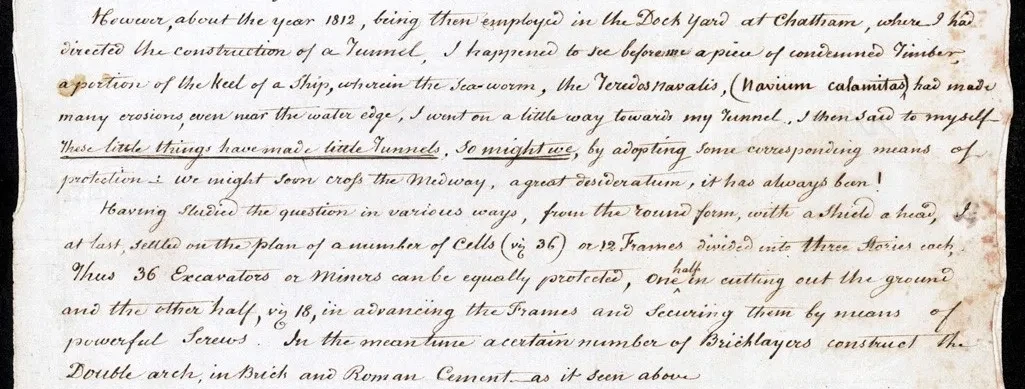
Extract from the letter from Brunel to his granddaughter in which he describes the tunnels in wood made by shipworms, and his own tunnelling shield. (RMG ID: AGC/1/45)
The library also has two books about the tunnel. One, published in 1828 and entitled Sketches of the Works for the Tunnel under the Thames (RMG ID: PBC6884), is tiny but full of technical details about how the tunnel was being financed and constructed. It includes some instructive drawings depicting the appearance and operation of the shield as described in Brunel’s letter.
Below is the drawing of a frontal view of the shield, showing an excavator in each of its 36 cells. Some of the cells are hidden behind the overlay of a cross-section of the tunnel’s brickwork.
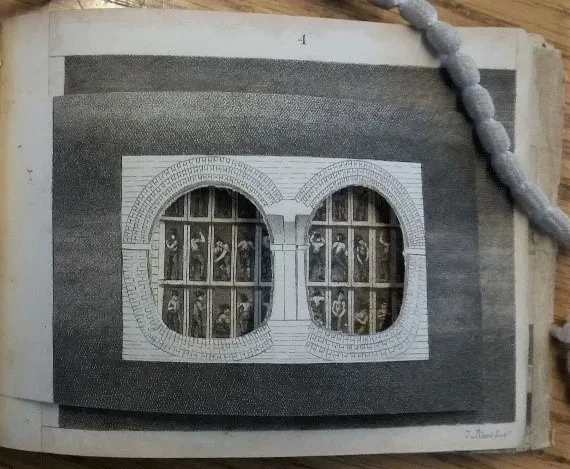
Next is a side view of the shield, showing the excavators in the three-storey frame, with the screws at the top and bottom of the frame for securing and advancing the shield, and the bricklayers building the tunnel walls behind.
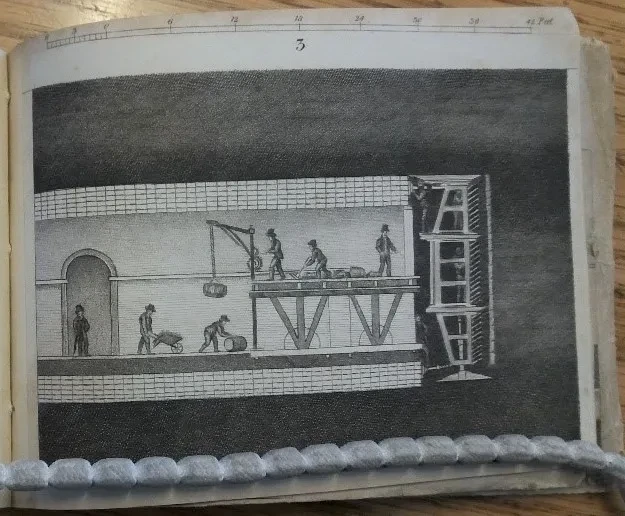
The other book, A perspective view of the Thames tunnel (RMG ID: PBC6883), is in fact a ‘paper peepshow’ with three peepholes at the front (shown below) through which can be viewed the two archways of the tunnel with the Thames overhead (rather like the drawing at the top of Brunel’s letter to his granddaughter, shown above).
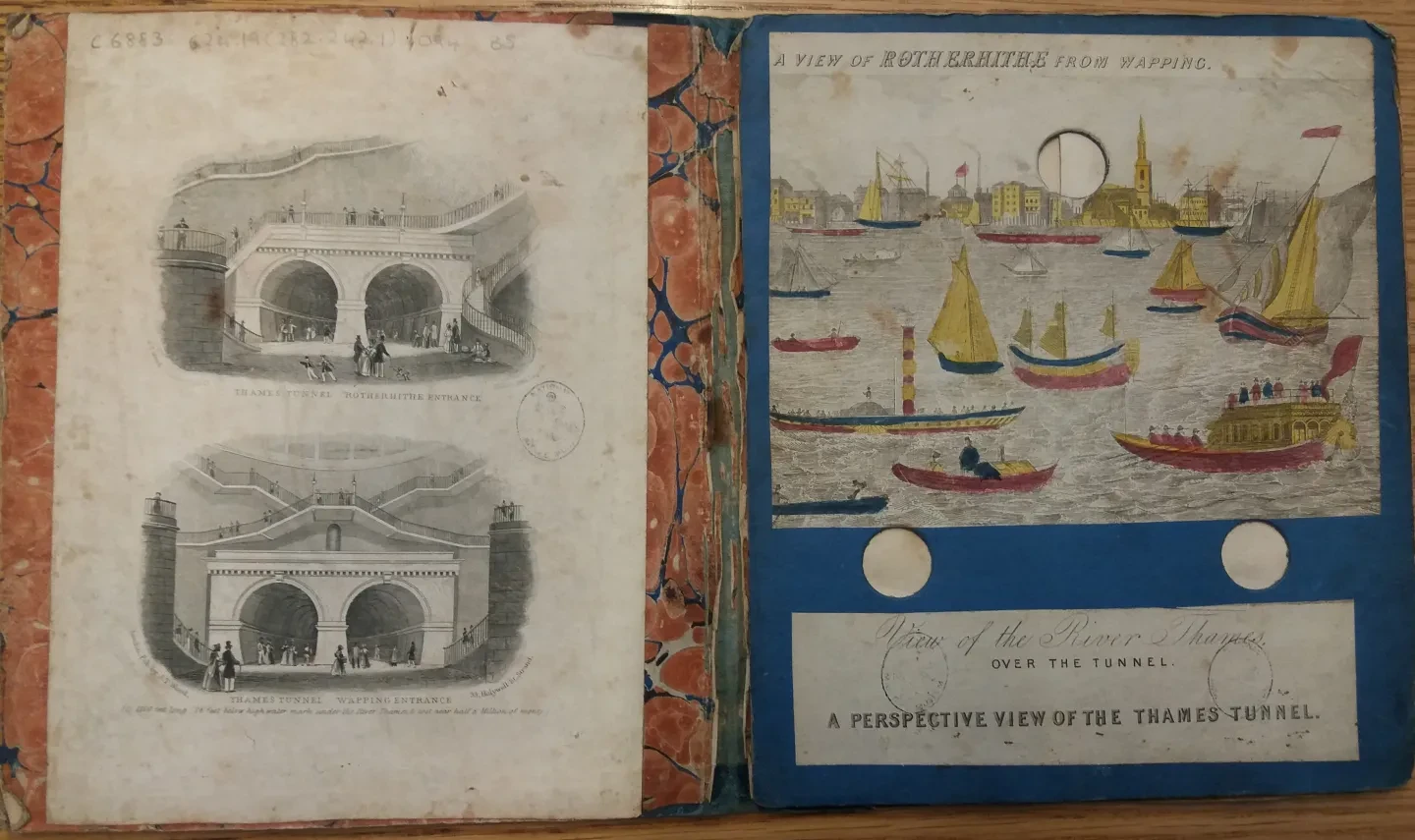
Despite the shield, construction of the tunnel was still hazardous – there were five serious flooding incidents during the course of the project which took 18 years to complete. When the tunnel finally opened in 1843 it became a very popular tourist attraction, receiving nearly two million visitors within its first year, but it remained unprofitable before being bought by the East London Railway Company in 1865.
You can find out more about the Thames Tunnel at the Brunel Museum in Rotherhithe.
